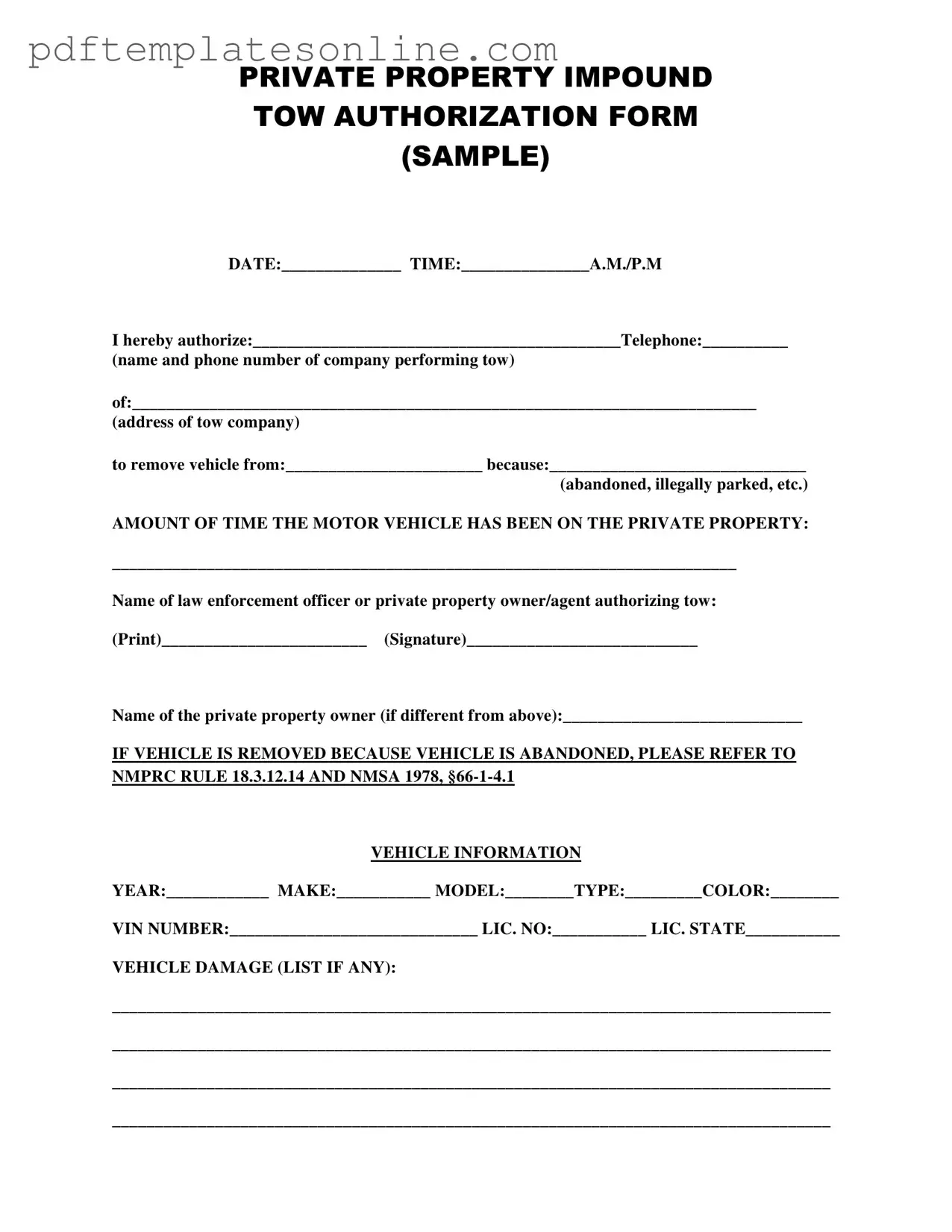Filling out the Tow Authorization form can seem straightforward, but many individuals make mistakes that can lead to complications. One common error is failing to provide complete information about the towing company. The form requires the name and phone number of the company performing the tow, along with its address. Omitting any of this information can delay the towing process or create confusion about which company is responsible.
Another frequent mistake involves not specifying the reason for the tow. The form includes a section where you must indicate whether the vehicle is abandoned, illegally parked, or for another reason. Leaving this section blank or using vague language can lead to disputes later on. Clarity is essential to ensure that the towing is justified and legally permissible.
People often overlook the importance of documenting the amount of time the vehicle has been on the private property. This information is critical for establishing the legitimacy of the tow. If this section is left incomplete, it may raise questions about whether the vehicle was actually in violation of any regulations. Providing a clear timeline can help avoid potential legal challenges.
Another area where mistakes frequently occur is in the identification of the authorizing individual. The form requires the name and signature of either a law enforcement officer or a private property owner or agent. Failing to include this information can render the authorization invalid. It is crucial to ensure that the individual signing the form has the authority to do so.
Lastly, individuals sometimes neglect to include detailed vehicle information. The form requests specifics such as the year, make, model, color, VIN number, and license plate information. Incomplete or inaccurate vehicle details can complicate the towing process and may even result in the wrong vehicle being towed. Taking the time to fill out this section thoroughly is essential for a smooth towing experience.
